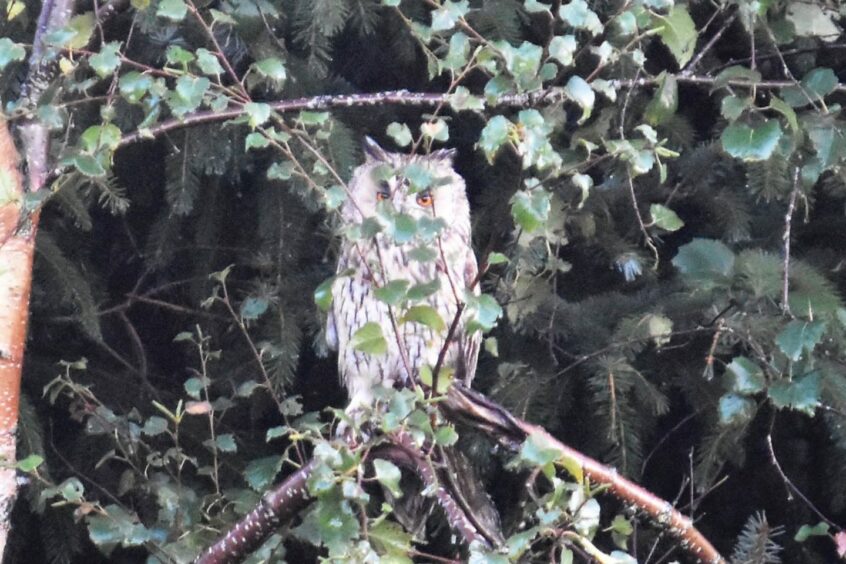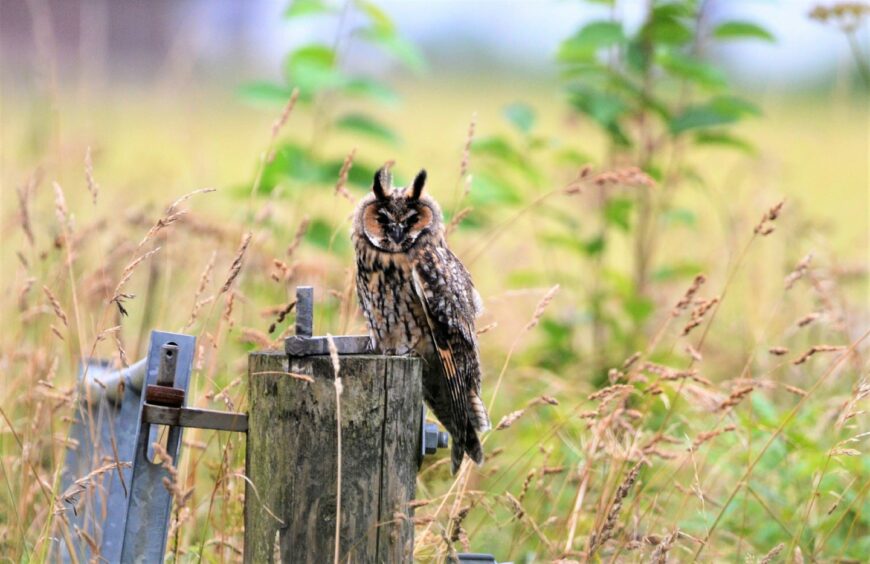Nature forever delivers wondrous surprises – and no more so than on a recent dawn walk along a farm track near my home.
On rounding a bend, a largish brown bird materialised, perched on a gatepost.
I thought initially it was a small buzzard, but when I brought my camera to bear, it transpired to be a majestic long-eared owl.
Owl is secretive and seldom seen
Although widespread in Scotland, the long-eared owl is a secretive bird and seldom seen.
This individual eyed me curiously with piercing orange eyes, during which time I was able to admire its marbled buff plumage streaked with darker shades of brown and black.
It then took to the air and flew low along the length of the track before it swept up over a beech hedge and disappeared.
The long-eared owl is an elegant, slender bird with two prominent tufts on top of the head.
Although they look like ears, they are in fact decorative feather extensions.
It is thought these help break-up the outline of the bird, thus enabling it to blend in seamlessly with its surroundings when perched amongst twigs and branches.
It is a clever design feature and no doubt one of the reasons why long-eared owls remain perennially hidden in the shadows and are so rarely encountered, even by eagle-eyed bird watchers.
The head tufts probably also act as a visual means to communicate mood with other owls – for example, being raised when alarmed or to make itself look bigger and more frightening during territorial disputes.
How common are long-eared owls?
I suspect long-eared owls are commoner than we imagine, and they are traditionally associated with small woods and shelter belts, as well as by the margins of larger forests.
This sighting by the farm track reminded me of the last time I had encountered one, about six years previously on a nearby hill pasture.
Indeed, such was my luck, over a period of a week or so, I glimpsed this same owl on several occasions.
It was a similar story almost every morning during that short spell – as dawn broke and just as I reached the crest of a small hill, a wavering and erratic flying long-eared owl swooped low over an adjacent sheep pasture.
The haphazard nature of the flight was astonishing and mesmeric, fluttering moth-like on unsteady wings, swerving and stalling as it covered the ground in a meticulous search of field voles.
The manner of its hunting technique reminded me of a barn owl, such was the similarity in the pattern of flight.
Often this long-eared owl would alight on a fence post, and then with one final flurry, fly down the length of the pasture into an impenetrable stand of semi-mature pines to roost for the day.
As I headed back for home in the rising light, the owl would occasionally call – a hollow and low-pitched ‘hoo, hoo, hoo’ that would be easy to miss unless you specifically listened out for it.
It was a magical experience that still resonates with me to this day.













Conversation